BY JANET STEINBERG
OMG! There it was… a moon-like
structure that seemed to be rising out of Interstate I-75 at Wapakoneta,
Ohio. I was about to check off another must-see on my bucket
list…Wapakoneta!
structure that seemed to be rising out of Interstate I-75 at Wapakoneta,
Ohio. I was about to check off another must-see on my bucket
list…Wapakoneta!
 |
| WELCOME TO WAPAKONETA |
What is Wapakoneta?
What is in Wapakoneta?
Why would anyone want to travel to
Wapakoneta?
Wapakoneta?
I realize many of you may be wondering
the answers to the above questions. Therefore, I will happily give you my
answer in two words…Neil Armstrong.
the answers to the above questions. Therefore, I will happily give you my
answer in two words…Neil Armstrong.
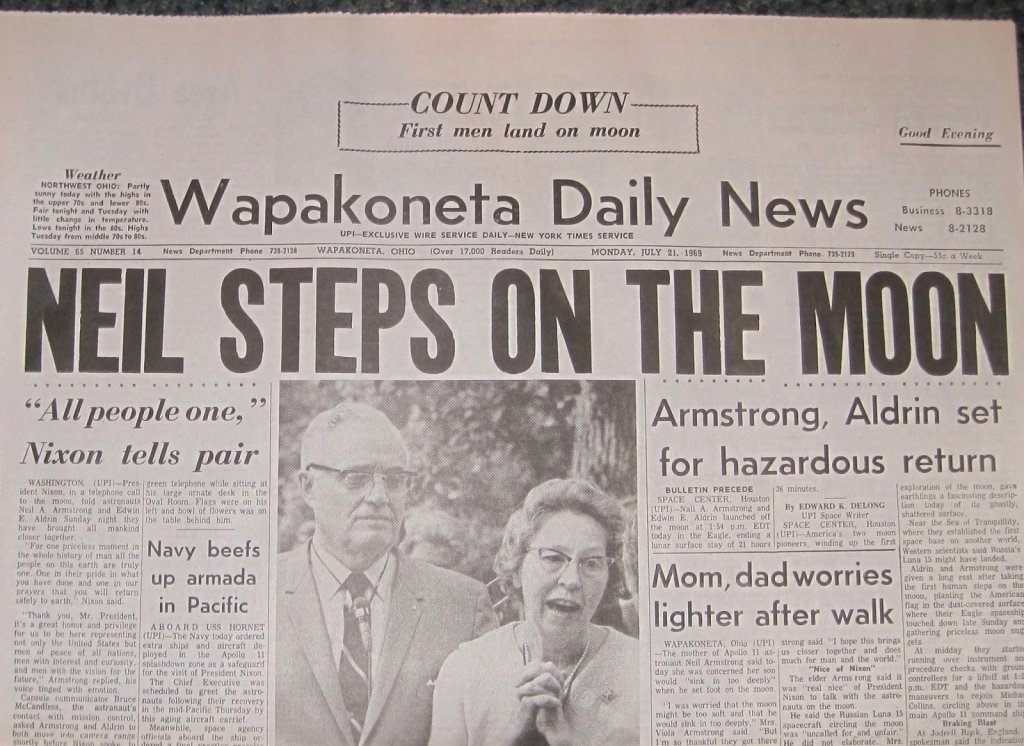 |
| WORLD HEADLINES BEGAN IN WAPAKONETA, OHIO |
Since that moment on July 20, 1969, when
Apollo 11 reached the moon, and the late Neil Armstrong set foot on the lunar
surface, Armstrong has been my hero. Until this very day, almost 50 years
later, every time I look up at the moon I am still in utter disbelief that a
man walked up there.
Apollo 11 reached the moon, and the late Neil Armstrong set foot on the lunar
surface, Armstrong has been my hero. Until this very day, almost 50 years
later, every time I look up at the moon I am still in utter disbelief that a
man walked up there.
In the early 1970’s, hero worship became a
reality when I was privileged to have Neil Armstrong as my dinner partner at a
party in Cincinnati, Ohio. On this most memorable evening of my life, I
found myself sitting next to a humble, modest, engaging, soft-spoken gentleman
that has become my legendary Man on the Moon.
reality when I was privileged to have Neil Armstrong as my dinner partner at a
party in Cincinnati, Ohio. On this most memorable evening of my life, I
found myself sitting next to a humble, modest, engaging, soft-spoken gentleman
that has become my legendary Man on the Moon.
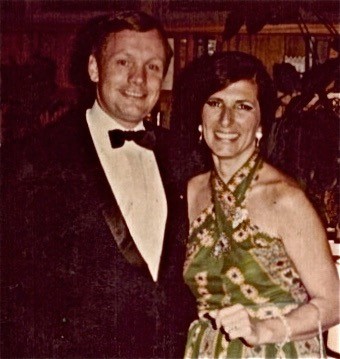 |
| JANET STEINBERG AND NEIL ARMSTRONG IN THE 1970s |
To this day, millions of people will
never forget the day that the world paused for a brief period as Neil Armstrong
spoke the words “That’s one small step for man, one giant leap for mankind.”
To this day, I will never forget the words Neil
spoke to me when I asked him the following question: ‘I know what you
said to the world, but what were you really thinking when you put your foot
down on the moon?’ Neil smiled his boyish grin and replied: “I was
really thinking…you’ve gone this far baby, don’t screw it up now!”
spoke to me when I asked him the following question: ‘I know what you
said to the world, but what were you really thinking when you put your foot
down on the moon?’ Neil smiled his boyish grin and replied: “I was
really thinking…you’ve gone this far baby, don’t screw it up now!”
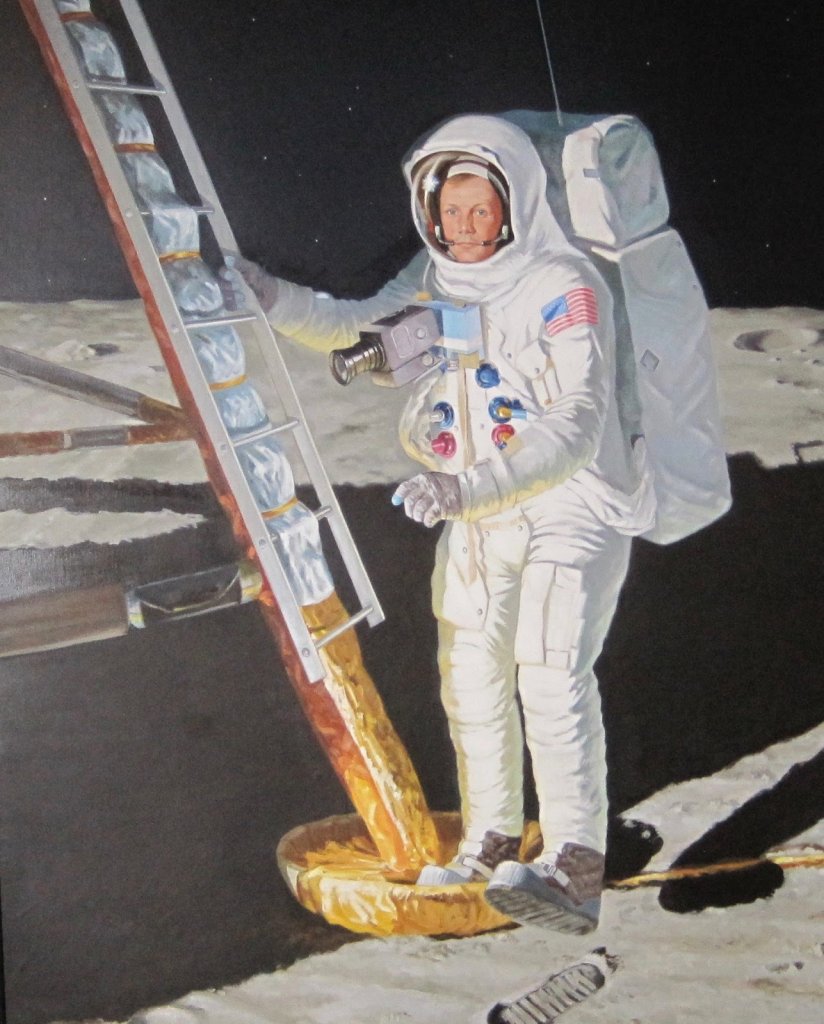 |
| MUSEUM PHOTO OF ARMSTRONG’S FOOTPRINT ON THE MOON |
Neil Armstrong, the first civilian
astronaut and the first man on the moon, was a native son of Wapakoneta, Ohio.
(Approximately 65 miles north of Cincinnati, 90 mile south of Toledo). The Armstrong Air and Space Museum honors his
achievements. Opened on the third anniversary of the lunar landing
(July 20, 1972), the museum was designed to resemble a futuristic moon
base. It is a beautiful site to behold whether gleaming in the sunlight,
or at dusk and nightfall when the dome glows white.
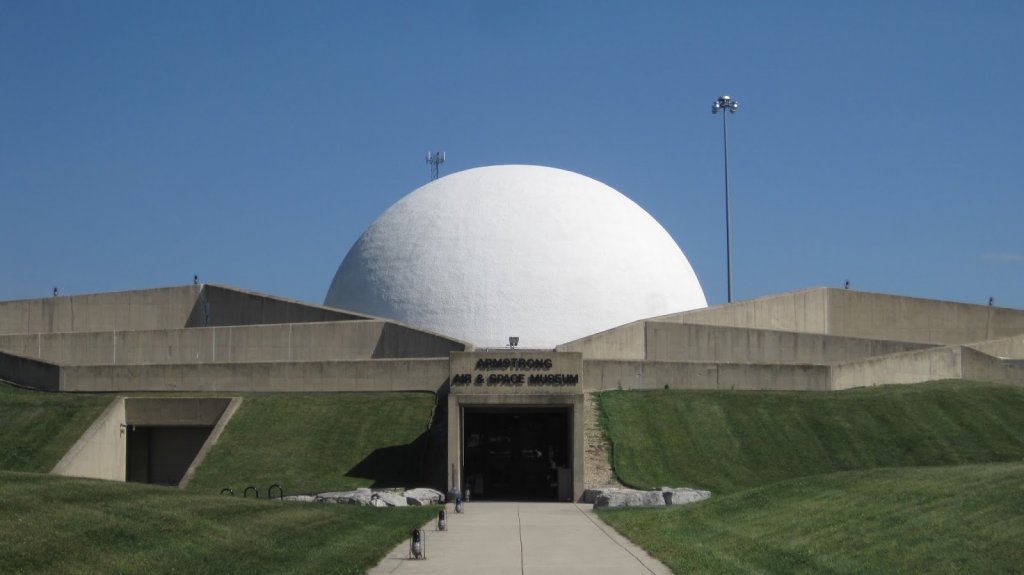 |
| ARMSTRONG AIR & SPACE MUSEUM, A SIGHT…AND A SITE…TO BEHOLD. |
As
you approach the museum you will be greeted by two outdoor displays that are
open year-long. The first of these displays is the F5D Skylancer, the
experimental airplane Neil Armstrong flew as a test pilot. Only four F5Ds
were produced.
you approach the museum you will be greeted by two outdoor displays that are
open year-long. The first of these displays is the F5D Skylancer, the
experimental airplane Neil Armstrong flew as a test pilot. Only four F5Ds
were produced.
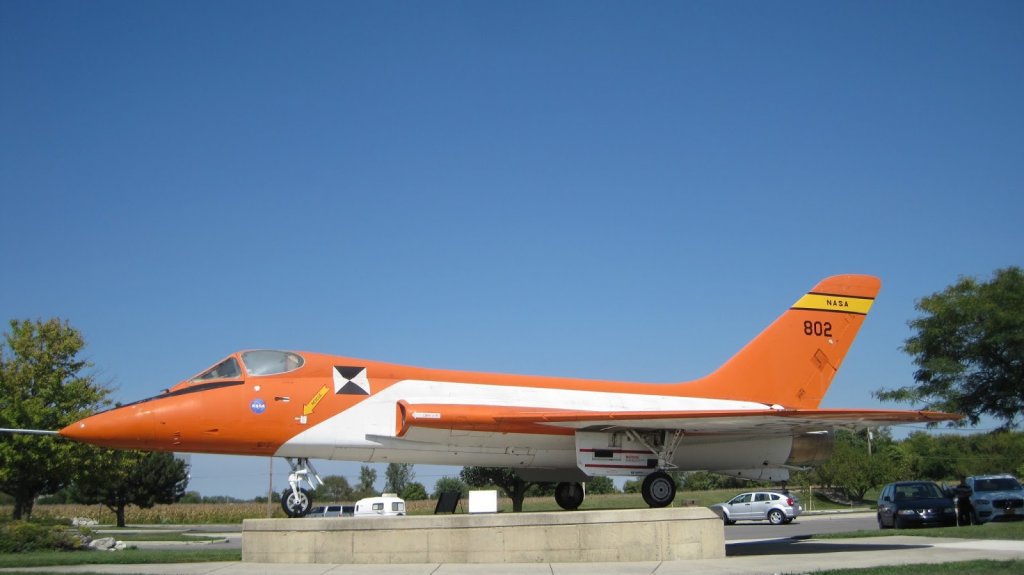 |
ARMSTRONG’S EXPERIMENTAL F5D AIRPLANE |
Then
you’ll approach replicas of the Apollo and Gemini capsules. These replica
capsules allow visitors to sit inside a Gemini spacecraft and peer into an
Apollo capsule.
you’ll approach replicas of the Apollo and Gemini capsules. These replica
capsules allow visitors to sit inside a Gemini spacecraft and peer into an
Apollo capsule.
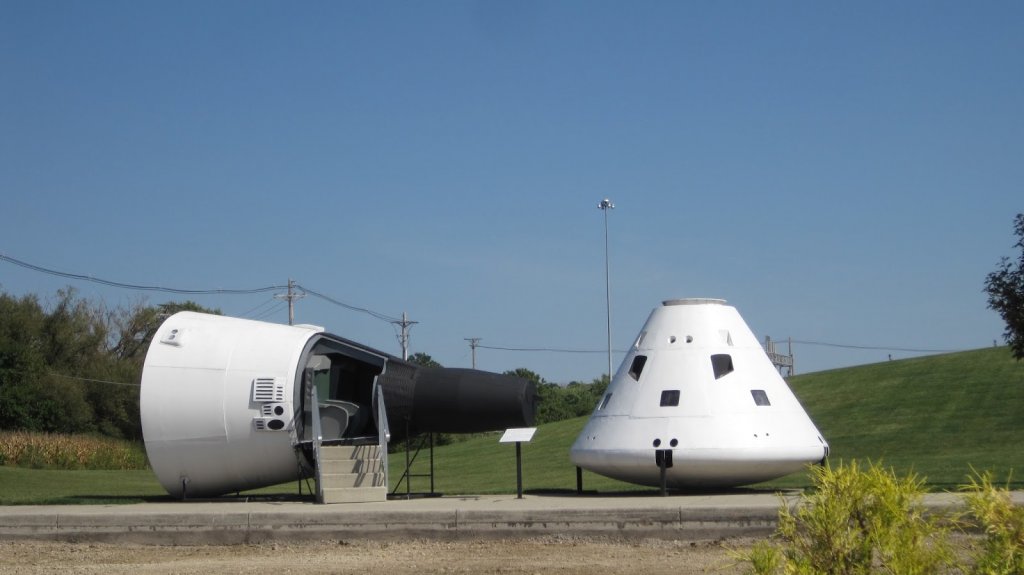 |
| REPLICAS OF THE GEMINI AND APOLLO CAPSULES |
Outstanding
features of the museum include many one-of-a-kind artifacts such as the Gemini
VIII spacecraft, a moon rock, Neil Armstrong’s Gemini and Apollo spacesuits and
the very airplane in which Neil Armstrong learned to fly. The Gemini VIII was
Neil Armstrong’s first spacecraft. He and David Scott conducted the first
space rendezvous and docking in 1966.
features of the museum include many one-of-a-kind artifacts such as the Gemini
VIII spacecraft, a moon rock, Neil Armstrong’s Gemini and Apollo spacesuits and
the very airplane in which Neil Armstrong learned to fly. The Gemini VIII was
Neil Armstrong’s first spacecraft. He and David Scott conducted the first
space rendezvous and docking in 1966.
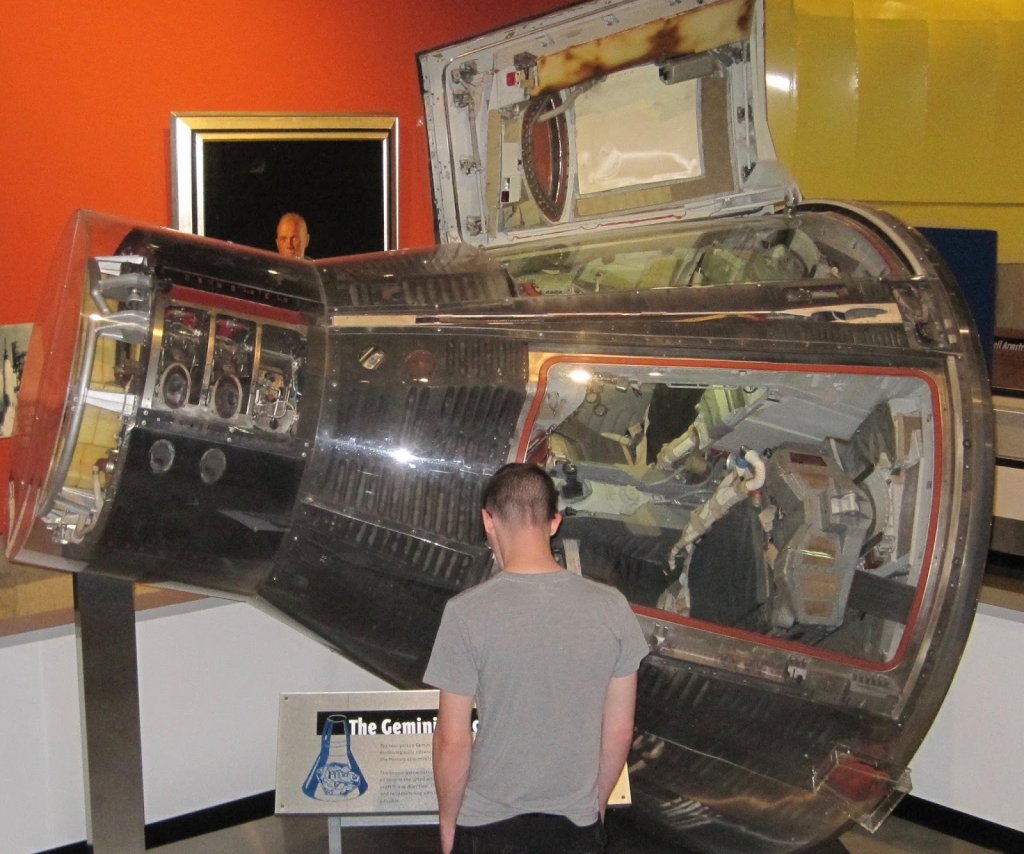 |
| THE GEMINI SPACECRAFT |
On
the Gemini VIII mission, Neil Armstrong wore a space suit for 11- hours until
the crew splashed down in the Pacific Ocean. Armstrong’s Apollo
spacesuit, his second spacesuit, weighed 190-lbs. on earth but would weigh just
32-lbs. on the moon, because the moon has 1/6 of earth’s gravity.
the Gemini VIII mission, Neil Armstrong wore a space suit for 11- hours until
the crew splashed down in the Pacific Ocean. Armstrong’s Apollo
spacesuit, his second spacesuit, weighed 190-lbs. on earth but would weigh just
32-lbs. on the moon, because the moon has 1/6 of earth’s gravity.
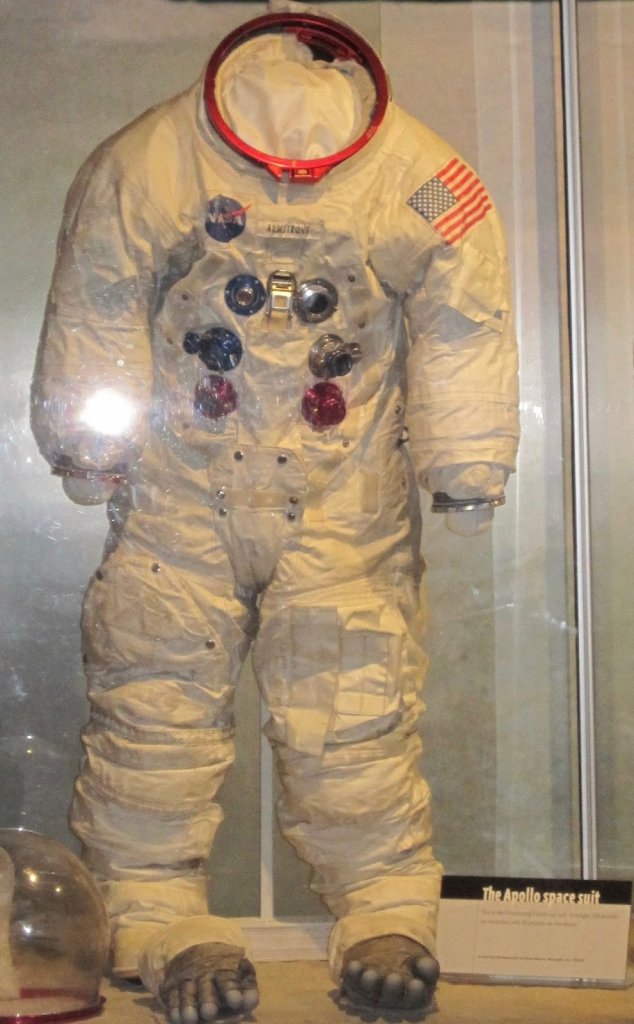 |
| NEIL ARMSTRONG’S APOLLO SPACE SUIT |
While
on the moon, Neil Armstrong and the crew of Apollo 11 collected a lunar
sample…the NASA term for a moon rock. Returning from the moon, the
astronauts (Neil Armstrong, Buzz Aldrin and Michael Collins) had to go through
customs, just as we regular folks do. Their customs declaration showed
that their flight route was from Cape Kennedy, to the Moon, returning to
Honolulu on July 24, 1969. Their cargo was “moon rock and moon dust
samples”.
on the moon, Neil Armstrong and the crew of Apollo 11 collected a lunar
sample…the NASA term for a moon rock. Returning from the moon, the
astronauts (Neil Armstrong, Buzz Aldrin and Michael Collins) had to go through
customs, just as we regular folks do. Their customs declaration showed
that their flight route was from Cape Kennedy, to the Moon, returning to
Honolulu on July 24, 1969. Their cargo was “moon rock and moon dust
samples”.
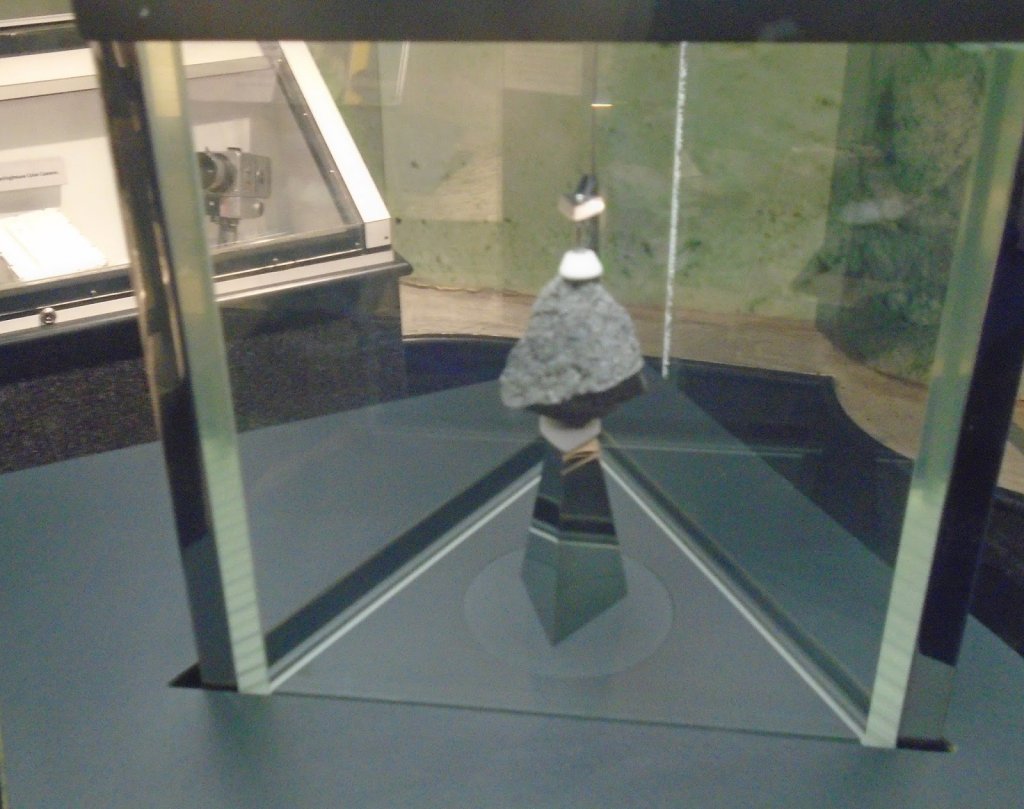 |
APOLLO 11’s LUNAR SAMPLE…aka MOON ROCK |
In
2011, the museum received accreditation from the American Association of
Museums, the highest national recognition for a museum. A visit to
the Armstrong Air & Space Museum is a visit to (in Astronaut Buzz
Aldrin’s words) “magnificent desolation”.
2011, the museum received accreditation from the American Association of
Museums, the highest national recognition for a museum. A visit to
the Armstrong Air & Space Museum is a visit to (in Astronaut Buzz
Aldrin’s words) “magnificent desolation”.
JANET STEINBERG is an award-winning
Travel Writer/Editor and International Travel Consultant with THE TRAVEL
AUTHORITY in Mariemont, Ohio.
Travel Writer/Editor and International Travel Consultant with THE TRAVEL
AUTHORITY in Mariemont, Ohio.
